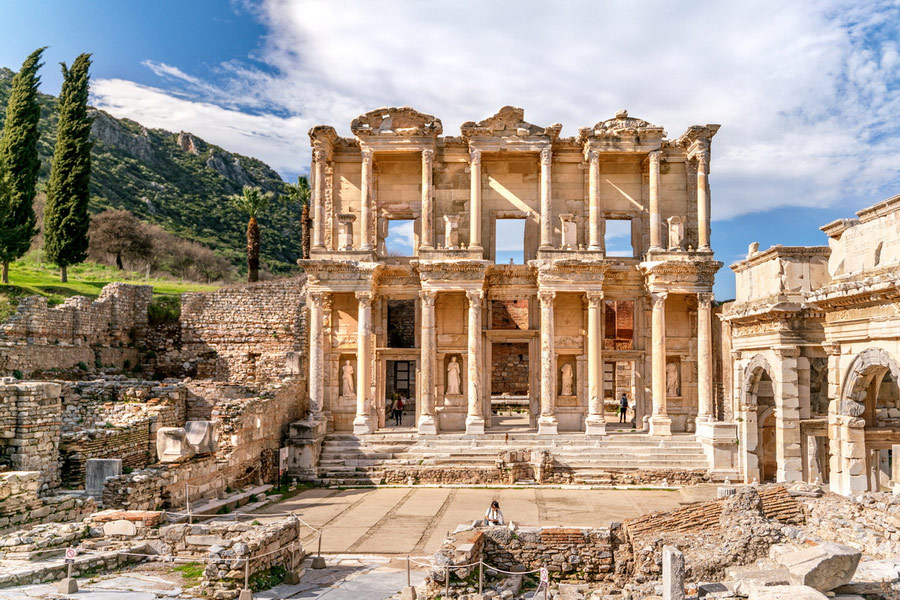
Last update on 15 April, 2025
Civilisations and Mother Nature have dotted the venerable lands of Turkey (Türkiye) with numerous and phenomenal landmarks, transforming the country into a museum without walls in which journeys enhance travellers’ awareness of the world’s rich and varied cultural inheritance.
The 19 Cultural UNESCO World Heritage Sites in Turkey
The mysterious megaliths of Göbekli Tepe, Cappadocia’s fairy chimneys, ethereal terraces of Pamukkale, and many more register Turkey in the top 15 countries having the most UNESCO World Heritage Sites, with its 21 cultural properties in the list, some of which you can visit with Museum Pass Turkey. A land of immemorial history, today it celebrates 19 cultural and 2 mixed UNESCO properties (cultural and natural), while another 79 incredible locations are on the waiting list and additionally feature 31 elements inscribed on UNESCO’s Intangible Cultural Heritage Lists.
Aphrodisias
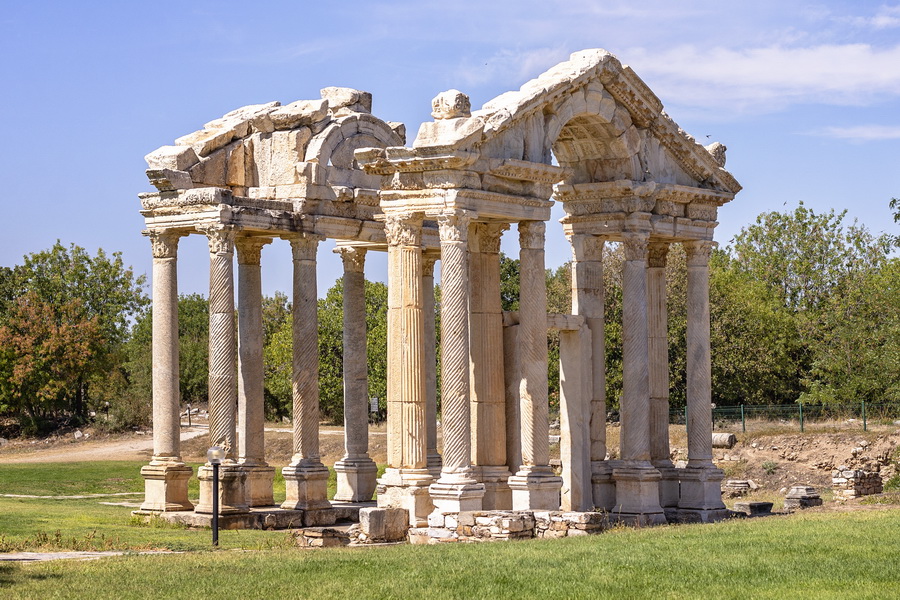
One of Turkey’s most fascinating UNESCO World Heritage Sites, 100 kilometres from Aydın and 180 kilometres from Marmaris, in the Aegean Region of Turkey, Aphrodisias (Afrodisias) is the ancient Hellenistic capital of the region and province of Caria, acclaimed for its marble sculptures and grand Temple of Aphrodite, dating back to the 3rd century BC. Named after Aphrodite, the ancient Greek goddess of love and beauty, the city, built after a century from the establishment of the temple, is positioned in southwestern Turkey, incorporating well-preserved ruins such as a theatre, agora and bath complexes. The marmoreal quarries nearby provided material for its legendary sculptors, whose works were prized across the Roman Empire. A must-visit destination for Turkey’s heritage tours, Aphrodisias showcases classical artistry and urban life.
Archaeological Site of Ani
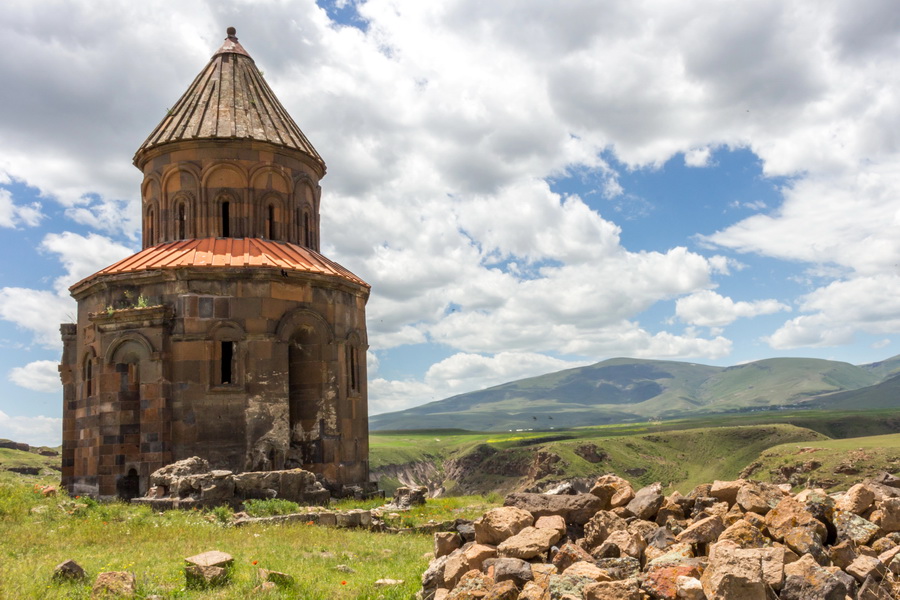
Perched on Turkey’s remote northeastern border, in the Eastern Anatolia Region, the 10th and 11th centuries CE mediaeval ruins of Ani are a hauntingly beautiful UNESCO site 200km away from Erzurum. Once a prosperous Silk Road capital of the Armenian kingdom of the Bagratides, the archaeological site of Ani spotlights 21 structures – stunning churches, mosques and fortifications reflecting Armenian, Byzantine and Seljuk influences. This "City of 1,001 Churches" additionally embraces an iconic red-brick cathedral. An essential stop for historic sites in Turkey, Ani’s dazzling cliffs and crumbling walls make it a dreamy film come true.
- Tip: Accessible with MuseumPass Turkey
Archaeological Site of Troy
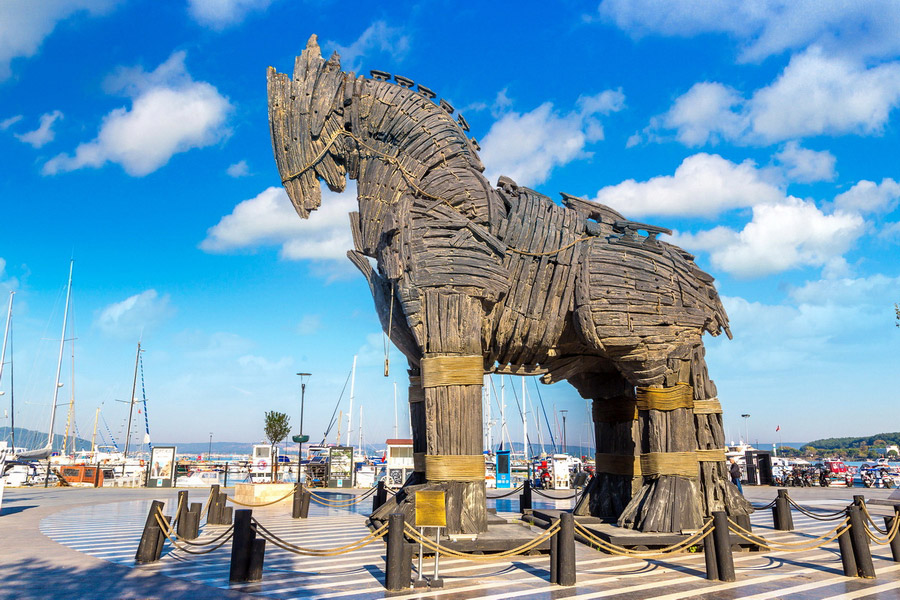
The ruins of Troy (Troya/Truva) near Çanakkale in the Marmara Region were immortalised by Homer’s Iliad and the legendary Trojan War between the Greeks (Achaeans) and the city of Troy, located in what is now northwestern Turkey. It began when Paris, a prince of Troy, stole the Spartan king’s beautiful wife, Helen. The Greeks, led by heroes like Achilles, Odysseus and Agamemnon, besieged Troy for ten years. The Trojans, including the noble Hector and King Priam, defended their city until the Greeks famously used the Trojan Horse to trick their way inside.
Today, the ruins of Troy is recognised by UNESCO, with layers of settlements from the Bronze Age to Roman times. Visitors can see a replica of the Trojan Horse, excavation sites and remnants of its legendary walls.
- Tip: Accessible with MuseumPass Turkey
Arslantepe Mound
The name Arslantepe means "Lion Hill" in Turkish, inspired by the lion statues discovered here during early excavations. Located in the Malatya plain of Eastern Anatolia, this ancient mound holds over 5,000 years of history, tracing the rise and fall of civilisations from a simple farming village to a center of early statehood.
Beginning as a Chalcolithic settlement (4500–3500 BC), Arslantepe evolved into a fortified Bronze Age city (3500–2000 BCE) and later became part of the Hittite Empire (1600–1200 BC). It persisted through the Iron Age before eventually fading into obscurity. The groundbreaking discoveries of the mound, such as the world’s oldest-known swords, a palace complex and exceptional wall paintings, make the site extraordinary.
- Tip: Accessible with MuseumPass Turkey
Bursa and Cumalıkızık: Birth of the Ottoman Empire
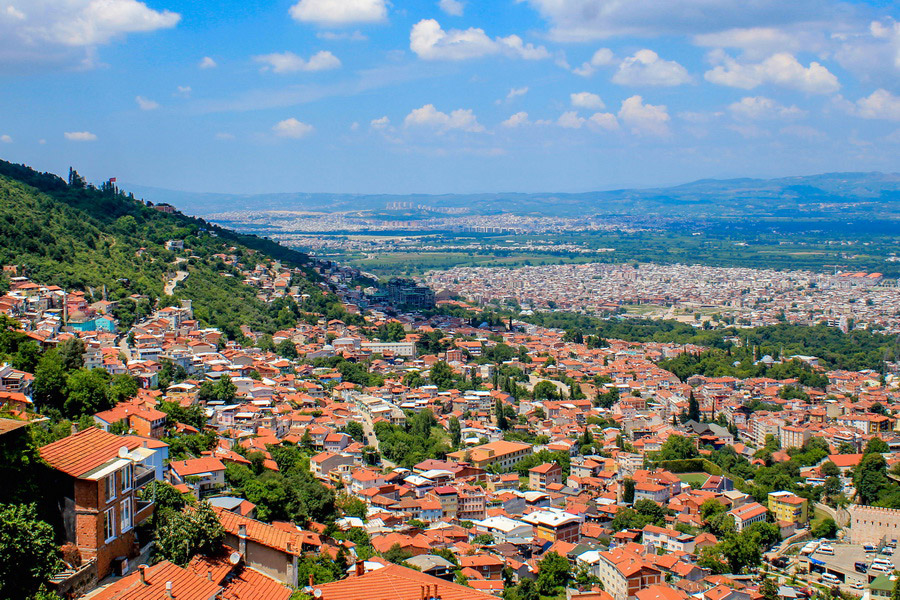
The cradle of the Ottoman Empire, Bursa and Cumalıkızık are additionally the hearts of the Silk Trade of Turkey. Bursa, the first capital of the empire, was shaped, in the early 14th century, by kulliyes, which were religious and social complexes with mosques, schools, baths and kitchens. Cumalıkızık, a nearby village, supported the capital through agriculture and trade. The city’s layout integrated Byzantine, Seljuk and Persian influences and became a model for later Ottoman cities. Crucial landmarks include the Orhan Ghazi (Orhangazi) Kulliye and the Khans commercial district. Many structures retain their original functions even after earthquakes.
City of Safranbolu
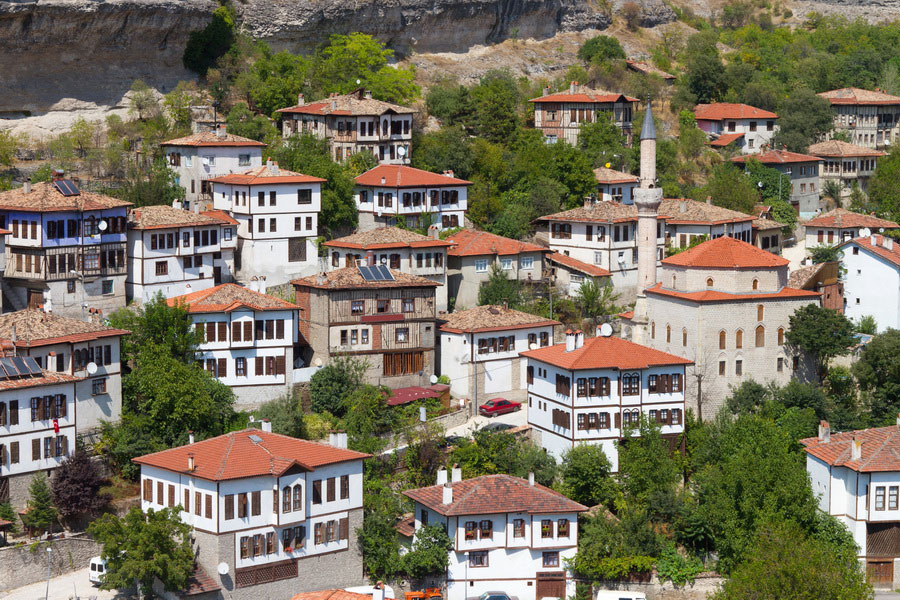
Breathtakingly beautiful Ottoman town in the Black Sea Region of Turkey, Safranbolu is a UNESCO Heritage Site famed for its timber-framed mansions and cobbled streets.
A key caravan stop from the 13th to early 20th centuries for East-West trade routes, its historic districts - Çukur (market area), Kıranköy (non-Muslim quarter) and Bağlar (summer houses) - present distinct architectural styles, from wooden Muslim homes to stone-built Christian shops. The town’s narrow streets, traditional houses with ornate interiors and caravanserais reflect its prosperous past
Within the Süleyman Pasha Madrasah. After the decline of caravan trade, Safranbolu adapted but kept its historic charm. Today the strict conservation laws and local expertise help maintain its authenticity. A visit is a journey to pre-industrial Ottoman life.
Diyarbakır Fortress & Hevsel Gardens
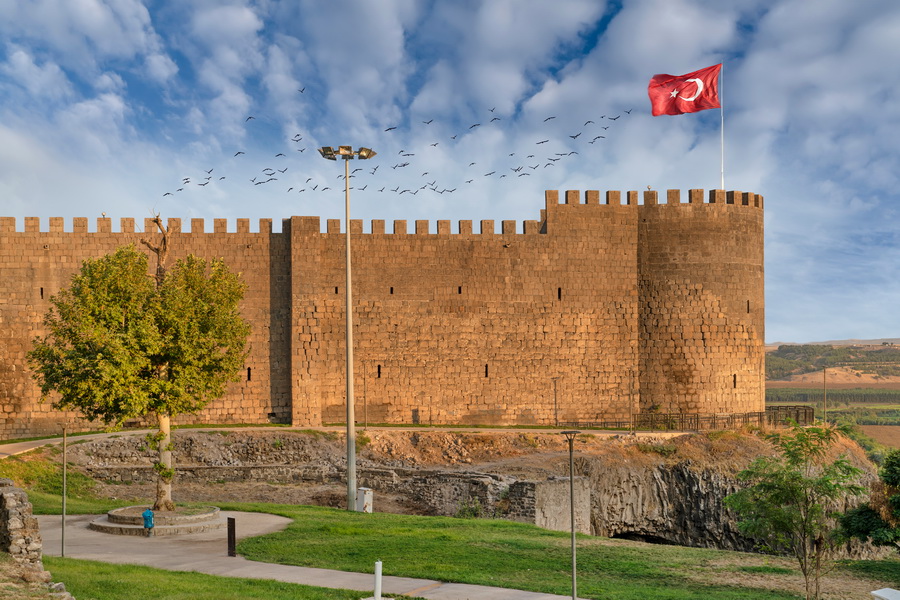
This mighty UNESCO site in Turkey combines 5.8 km of imposing black basalt walls, the Tigris River and lush Hevsel Gardens (Hevsel Bahçeleri) – a 7,000-year-old agricultural oasis in Southeastern Anatolia.
Diyarbakır Fortress (Diyarbakır Kalesi) and Hevsel Gardens display over 2,000 years of history from Roman to Ottoman rule. The fortress includes the İçkale (Inner Castle) and Amida Mound, fundamental archaeological sites. Though well-preserved, the area faces threats from urban development and dam projects. Protected under Turkish heritage laws, the site requires careful management to balance conservation with modern needs. A visit will reveal a striking look at layered civilisations and ancient engineering.
Ephesus
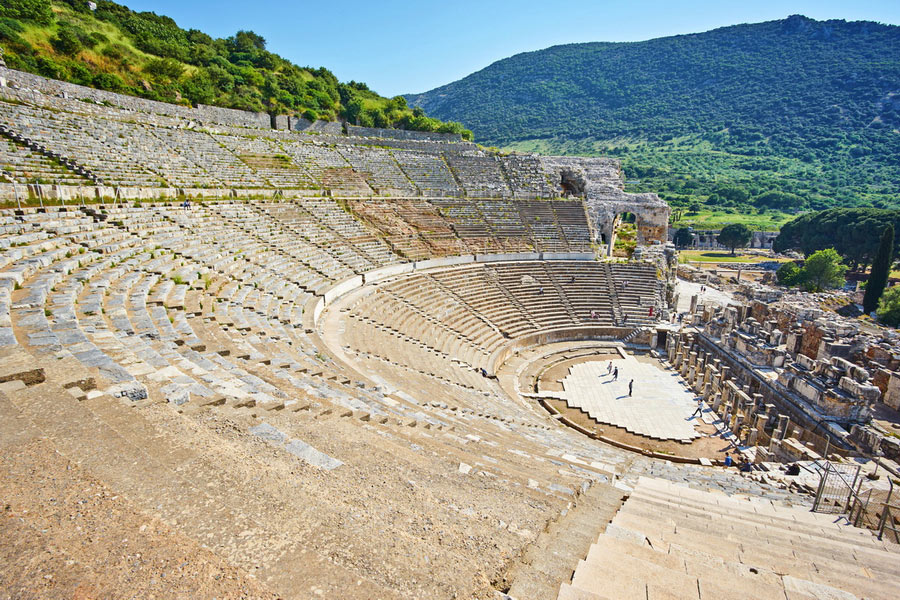
Turkey’s crown jewel, near Kuşadası, Ephesus (Efes), is a UNESCO-listed Roman metropolis featuring the Library of Celsus, the Great Theatre and the Temple of Artemis (Artemis Tapınağı), one of the Seven Wonders of the Ancient World.
One of the best-preserved ancient cities in the Mediterranean, it was a major Greek and Roman port, nowadays only remaining with fragments of the Temple of Artemis (dedicated to the goddess of the wilderness, hunting and childbirth). The site impresses with marble streets, terrace houses with mosaics and the ruins of Roman baths. Nearby, the House of the Virgin Mary is a revered Christian pilgrimage site. Ephesus is about 30 minutes from Selçuk, where you should visit early to avoid crowds and heat.
- Tip: Accessible with MuseumPass Turkey
Göbekli Tepe
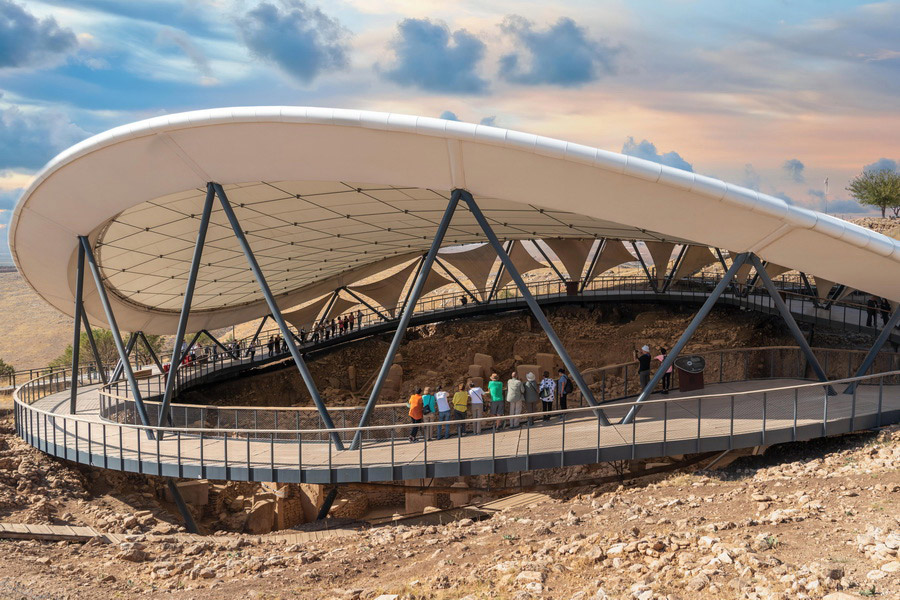
Dating back to 9600 BC, Göbekli Tepe (Göbeklitepe) is the world's oldest known temple complex, predating Stonehenge by 6,000 years. Built by hunter-gatherers, its massive T-shaped limestone pillars are carved with animal reliefs. Located near Şanlıurfa in southeastern Turkey, this UNESCO site is full of memories of fascinating prehistoric rituals and early human civilisation. Visit early to beat the heat and pair your trip with Şanlıurfa’s Archaeology Museum to see artefacts from the site. The on-site shelter protects the ruins, but you should wear sturdy shoes as the terrain is uneven.
- Tip: Accessible with MuseumPass Turkey
Gordion
In Ankara province, spread across the Central Anatolia Region, an ancient Phrygian site, Gordion is a prime archaeological site demonstrating Iron Age civilisation with a well-preserved citadel gate, early mosaic elite buildings and an industrial quarter.
Neighbouring King "Midas Mound" brings out the oldest unharmed wooden structure (740 BC) and ancient wooden furniture. In Greek myth, King Midas was granted a wish, the "Midas Touch", that turned anything he touched into gold. But his dream became a nightmare when even food and water turned to metal, leaving him starving and desperate.
Protected as a conservation area, Gordion provides unparalleled insights into Phrygian culture, timber construction and metalwork. Conservation efforts focus on preventing erosion and burglary and maintaining the rural landscape.
- Tip: Accessible with MuseumPass Turkey
Great Mosque & Hospital of Divriği
A masterpiece of Islamic architecture, the Great Mosque and Hospital of Divriği (Divriği Ulu Camii ve Darüşşifası) is a 13th-century UNESCO site, which was commissioned by Emir Ahmet Shah from the House of Mengüjek. It’s dazzled with its ornate stone carvings and innovative vaulting. The mosque-hospital is a hidden gem of Eastern Anatolia Region.
Its three delicately carved doorways display unmatched Seljuk workmanship in contrast to the simple inner walls. The hospital has a domed atrium with a central pool, and the mosque is designed to withstand the severe weather. The site is still authentic despite previous restorations, although urbanisation and weathering pose dangers.
Hattusha: Hittite Capital
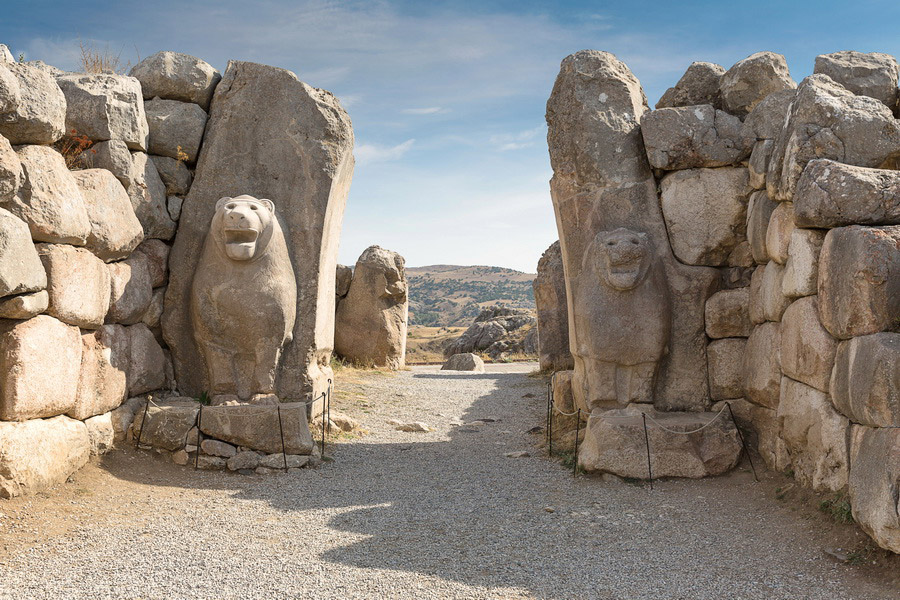
Hattusha, the capital of the Hittite Empire (1600-1180 BC), is one of Turkey’s most impressive archaeological sites.
Surrounded by 8 km of massive walls, the ruins include well-preserved temples, royal palaces and huge gates like the Lion’s Gate and Royal Gate. Just outside the city is the Yazılıkaya open-air sacred place with the exquisite rock reliefs of Hittite gods and kings. The site is proof of Bronze Age urban planning, religion and military architecture. Protected as a UNESCO World Heritage Site and part of Boğazköy-Alacahöyük National Park, Hattusha remains a basic destination for understanding the powerful but now-vanished Hittite civilisation.
- Tip: Accessible with MuseumPass Turkey
Historic Areas of Istanbul
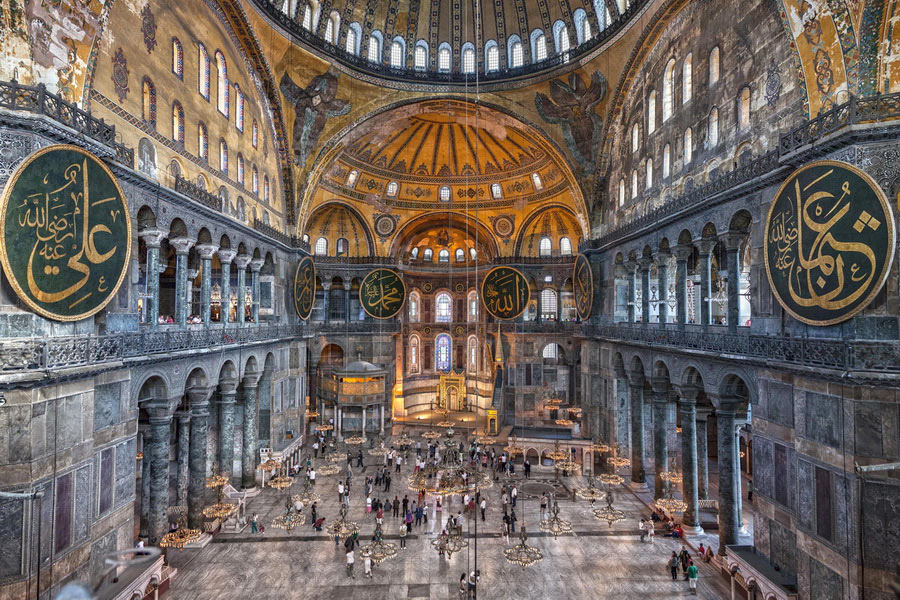
Istanbul's historic areas establish over 2,000 years of history as the capital of Byzantine and Ottoman empires. Key landmarks enclose the Hagia Sophia (Ayasofya), Topkapı Palace (Topkapı Sarayı), the ancient Hippodrome of Constantine, and the Süleymaniye Mosque (Süleymaniye Camii), all set within an unforgettable skyline along the Bosphorus. The city’s walls, churches, mosques, traditional Ottoman houses and its unique faith districts are protected under Turkish law. Ongoing restoration and a management plan aim to preserve its unique combination of European and Asian influences.
- Tip: Accessible with the MuseumPass Turkey; Visitors can access architectural and cultural sites such as the Hagia Sophia (Ayasofya), Topkapı Palace (Topkapı Sarayı), the Church of St. Irene (Hagia Irene), the Basilica Cistern (Yerebatan Sarnıcı); and with the Istanbul Museum Kart, the Chora Church (Kariye Camii).
Nemrut Dağ
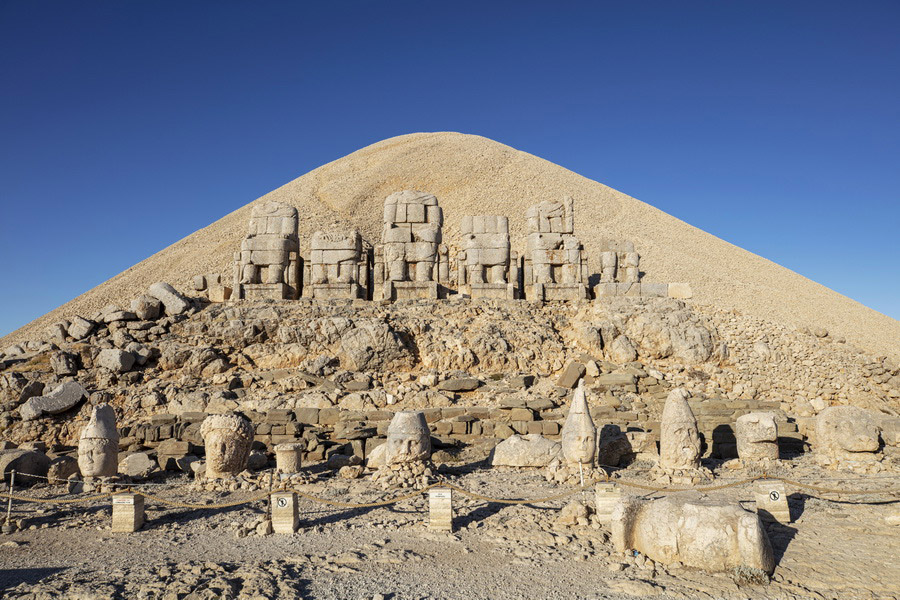
At the summit of Turkey’s Eastern Taurus range, perched on 2,134 metres high (7,001 ft), Nemrut Dağ (Nemrut Dağı)’s 50-metre mound (145m wide) is the burial site of Antiochus I of Commagene (69–34 BC). The terraces of this UNESCO site accommodate colossal limestone statues of deities, now headless, edged by lion and eagle guardians. Traditional monoliths depict Antiochus’ Persian and Macedonian lineage decorated by Greek and Persian art. The lion horoscope may mark the site’s construction. Vulnerable to earthquakes and weathering, the site remains awe-inspiring. The best time to visit Nemrut Dağ is at sunrise and sunset for the best views, and it is accessible via old ceremonial routes, protected in a national park. Nearby visitor centres (Adıyaman/Malatya) enrich its context.
- Tip: Accessible with MuseumPass Turkey
Neolithic Site of Çatalhöyük
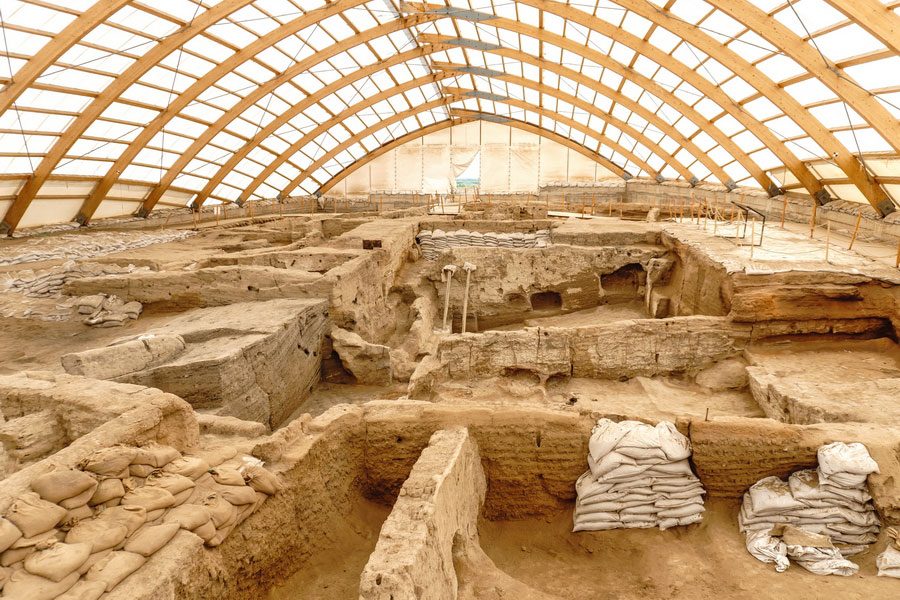
One of the world’s most significant Neolithic sites, Çatalhöyük in Turkey’s Konya Plain, is a 9000-year-old settlement consisting of two mounds – the eastern one (7400–6200 BC) with 18 layers of Neolithic occupation and the western one (6200–5200 BC), which bears evidence of development during the Chalcolithic period. The village's distinctive design, characterised by no streets and densely populated, roof-access homes, depicts a very well-organised, egalitarian community.
Well-preserved sculptures, burial sites, and wall paintings have been found during excavations. Visitors can stroll among the remains where everyday Neolithic life took place thanks to the site's remarkable preservation, which is safeguarded by contemporary shelters. A small on-site museum provides further background, making Çatalhöyük an essential stop for understanding humanity’s transition from nomadic to urban living.
- Tip: Accessible with MuseumPass Turkey
Pergamon and its Multi-Layered Cultural Landscape
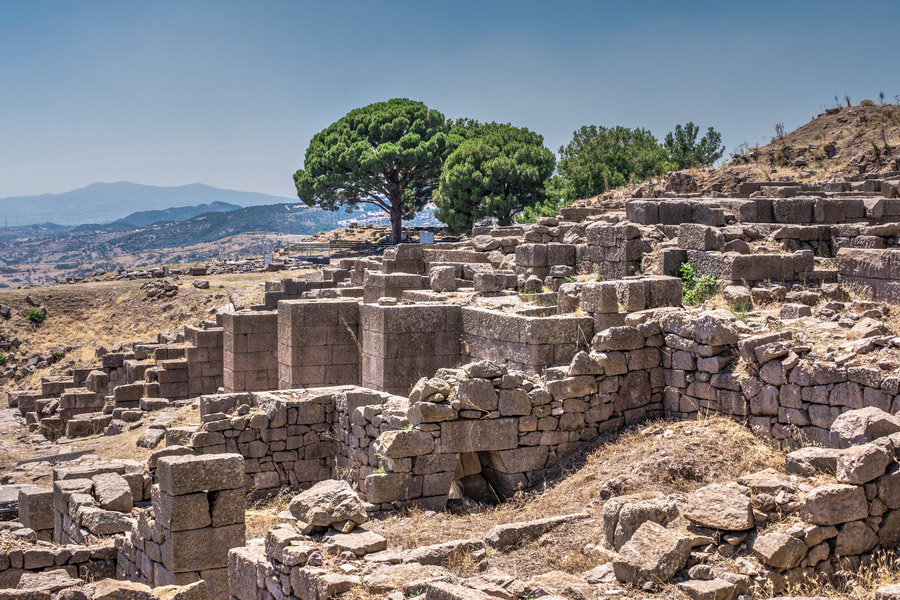
Pergamon sits above the Bakırçay Plain in Izmir province. Founded in the 3rd century BC as the Attalid dynasty’s capital, this Turkish UNESCO World Heritage Site became a major cultural and scientific centre, home to a legendary library and a renowned sculpture school. Hellenistic wonders like the terraced Gymnasium, Great Altar and steep theatre are celebrated on the acropolis. It flourished as Asia's provincial capital during Roman administration, adding notable structures like a huge amphitheatre and the Asclepieion (Asklepion) health centre, which was the Sanctuary of Asclepius, the god of healing. A remarkable combination of pagan, Christian, Jewish and Islamic history was later brought to the city by the Byzantine and Ottoman empires, which also enhanced it with churches, mosques and bazaars. The Kybele Sanctuary, dedicated to the cult of Cybele, the Mother Goddess, and burial mounds, which are visually connected to the acropolis, are revealed by the surrounding topography. Pergamon is still a remarkable example of how cities have changed throughout time, and it is protected by strict conservation regulations.
- Tip: Accessible with MuseumPass Turkey
Selimiye Mosque and its Social Complex
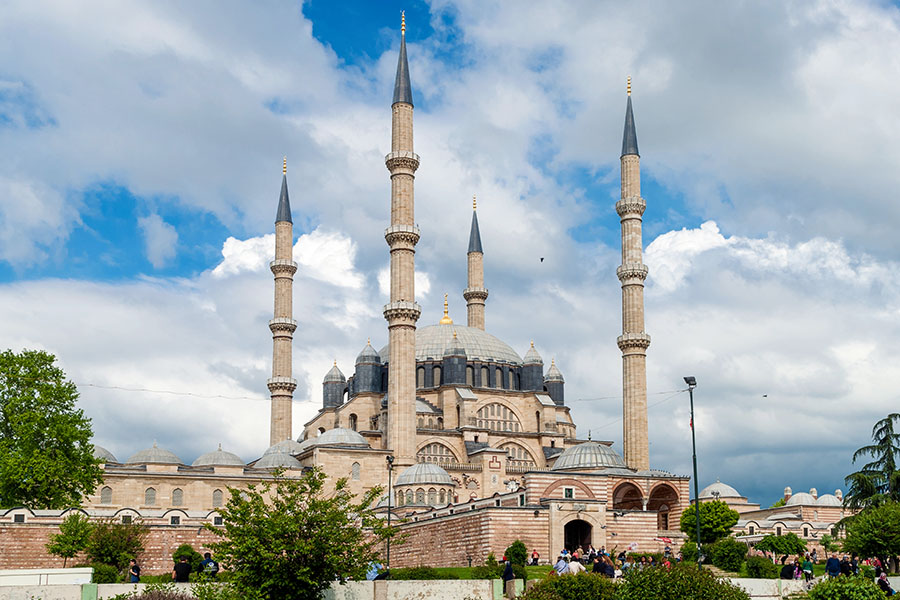
The Selimiye Mosque (Selimiye Camii) and its social complex in Edirne, a magnum opus of 16th-century Ottoman architecture, represent the Grand Architect Mimar Sinan’s career peak, spotlighting a grand dome, four slender minarets and splendid Iznik tile work. This UNESCO-listed site, once the heart of the Ottoman Empire, comprises madrasahs, a covered bazaar, a library and a clock house, designing a harmonious Ottoman complex, or külliye. The innovative design of the mosque lets a huge amount of natural light into the interior, with its sophisticated craftsmanship and well-preserved structure. The complex remains a critical historical and cultural landmark, with ongoing conservation efforts ensuring its preservation for future generations.
Wooden Hypostyle Mosques of Mediaeval Anatolia
The Wooden Hypostyle Mosques of Mediaeval Anatolia (Anadolu'nun Ortaçağ Dönemi Ahşap Hipostil Camileri) are a unique group of five 13th- and 14th-century mosques in Turkey with their exceptional timber craftsmanship and Central Asian architectural influence. Built with stone exteriors and highly detailed wooden interiors over carved columns, painted ceilings and unusual kundekari technique minbars, these mosques represent a rare surviving style of early Islamic architecture. Main examples are Afyon Great Mosque, Sivrihisar Great Mosque, Aslanhane Mosque (Ankara), Eşrefoğlu Mosque (Konya) and Mahmut Bey Mosque (Kastamonu), displaying masterful woodwork and historical authenticity. Protected under Turkish heritage laws, these mosques are still active places of worship and keep their mediaeval craftsmanship, making them essential for travellers exploring Turkey’s historical Islamic architecture and UNESCO World Heritage sites.
Xanthos-Letoon
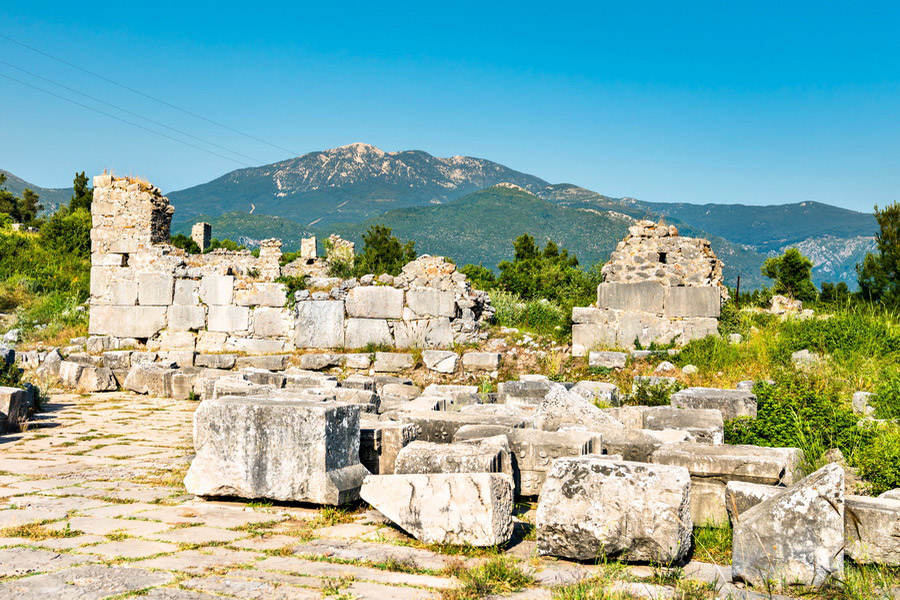
The twin archaeological sites of Xanthos (Ksanthos) and Letoon are near Turkey’s Turquoise Coast in Antalya province, just 62 km away from Fethiye and 50 km from Kaş. They produce the heart of ancient Lycian civilisation, sticking together Anatolian, Greek and Roman influences. Xanthos, the political capital, is famed for its enormous pillar tombs, rock-cut sarcophagi, and the iconic Nereid Monument, whose style inspired the Mausoleum at Halicarnassus.
Letoon, the spiritual centre, holds three temples dedicated to Leto, the childhood goddess, spouse of the chief deity, Zeus , and mother of Apollo and Artemis; Apollo (god of the arts, song, music, male beauty, poetry and light) and Artemis (goddess of the wilderness, hunting and childbirth), along with a sacred nymphaeum and the vital Lycian-Greek-Aramaic trilingual inscription which was pivotal to decode this lost Indo-European language. Scattered well-preserved ruins, in addition to a Roman theatre and Byzantine churches, the sites remain untouched by modern development, though groundwater and an old road pose minor threats. Conservation efforts ensure the monuments' survival, while ongoing projects aim to improve visitor access without compromising their authenticity.
- Tip: Accessible with MuseumPass Turkey
The 2 UNESCO World Heritage Cultural and Natural Mixed Sites in Turkey:
Göreme & Cappadocia
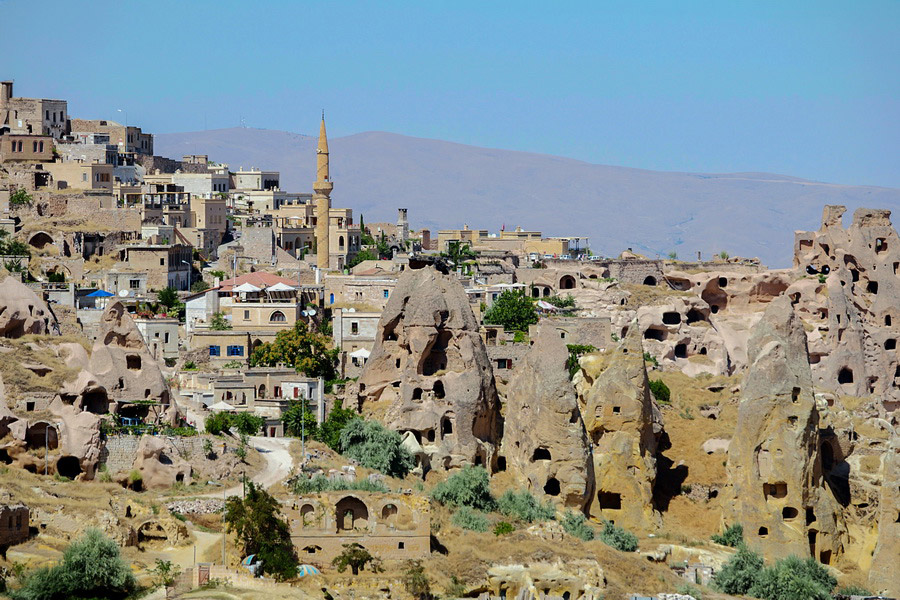
Cappadocia's unusual terrain of fairy chimneys and volcanic rock valleys hides one of the most amazing cave-dwelling complexes in the world, shaped by ages of wind and water. The region preserves 4th-century Byzantine cave churches ornamented with vivid frescoes, underground cities like Derinkuyu and Kaymaklı built as refuges from invaders, and entire troglodyte villages excavated from the soft stone. Major sites are the Göreme Open-Air Museum with its richly painted rock-cut churches (Tokalı Kilise, Karanlık Kilise) and the Pasabag Valley's giant fairy chimneys. Its ancient rock-cut architecture and Byzantine-era art are protected even today. Hot air balloon rides at sunrise reveal the full spectacle of this otherworldly Anatolian landscape, where nature and human history encounter each other.
Hierapolis-Pamukkale
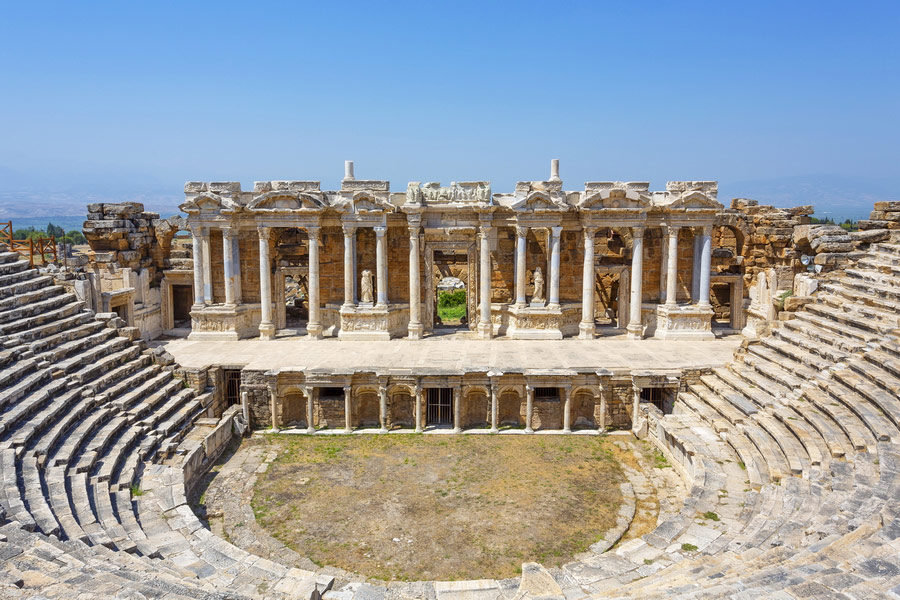
The UNESCO-listed Hierapolis-Pamukkale in Turkey's Denizli province brings together extraordinary natural formations with well-preserved Greco-Roman ruins. Over 200-metre-high cliffs spill thermal mineral waters down gleaming white travertine terraces, forming petrified waterfalls and pools that give Pamukkale its "Cotton Castle" name. Neighbouring ancient Hierapolis was founded in the 2nd century BC as a thermal spa by Pergamon's kings. The glowing ruins encompass a huge Roman Theatre with custom-made paintings, the Temple of Apollo (god of the arts, song, music, male beauty, poetry and light), a vast necropolis, and the 5th-century Martyrium of St Philip, an octagonal work of early Christian architecture. Tourists can still soak in the old healing thermal springs, although conservation measures prevent access to delicate travertine parts. Ongoing excavations and restorations preserve the site's authenticity while mitigating tourism pressures. Hierapolis-Pamukkale is one of Turkey's rarest historical settings, thanks to its combination of geothermal beauty and ancient urban relics.
- Tip: Accessible with MuseumPass Turkey
In addition you may learn about UNESCO Intangible Cultural Heritage of Turkey.

